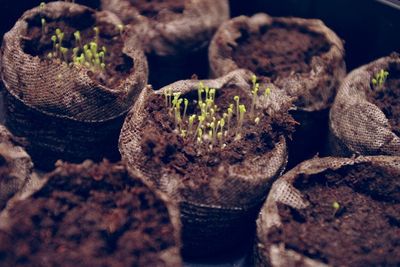How to Grow Chamomile from Seed
There are two different species of plants commonly known as chamomile.
Chamaemelum mobile, also commonly known as English, Russian, or Roman chamomile, is a low-growing perennial. It is considered to be the true chamomile and is used in landscapes as a flowering groundcover or lawn substitute. English chamomile is hardy in zones 4-11 and is cultivated all over the world for its herbal properties. German chamomile, or Matricaria recutita, is also cultivated as the herb chamomile, but it is considered the false chamomile. It is an annual that grows to 18 inches (45.5 cm.) tall and its consistent, miniature, daisy-like flowers add charm to the container, herb, and cottage gardens.
Both types of chamomile plants produce small white composite flowers with bright yellow center discs. German chamomile produces a hollow conical disc from which its white petals arch down from. English chamomile’s disc is flatter and solid, the flower petals spread outward from the disc, like a ray. Upon each disc, or seed head, an abundance of chamomile seeds are produced, which germinate within 7-10 days when exposed to adequate soil, sunlight, and water. When seeds are left on the plant to mature and spread naturally, one chamomile plant can quickly turn into a lovely patch of chamomile.
Planting Chamomile Seeds
Chamomile usually produces flowers that can be harvested for herbal use in just 6-8 weeks. When harvesting chamomile flowers, most herb gardeners will leave some seed heads to naturally self-sow to produce a small colony of chamomile. You can also set aside some of the harvested blooms to dry for seed to plant in other areas. So when to plant chamomile seeds in the garden? Chamomile seeds can be started indoors 3-4 weeks before the last frost. When planting chamomile seeds indoors, fill a seed tray with a well-draining potting mix, then simply scatter the seeds over the loose soil and lightly tamp it down or water it in with a light mist. Seedlings should be thinned to 2-4 inches (5-10 cm.) apart when they are about an inch (2.5 cm.) tall. Plants do not like to be transplanted once their roots have been established and they begin to produce blooms, so many gardeners prefer to sow the seeds directly in the garden. In the garden or as a lawn substitute, chamomile seeds need only be scattered over loose soil and gently tamped down. Germination can occur in temperatures as low as 45-55 F. (7-13 C.) in full sun to part shade.
